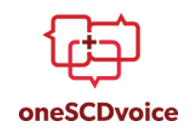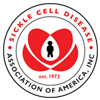Trusted Resources: Evidence & Education
Scientific literature and patient education texts
Orphan Drugs for Sickle Vaso-occlusion: Dawn of a New Era of Targeted Treatment
source: Dove Press
year: 2015
authors: Carlton Dampier
summary/abstract:While an orphan disease in the USA, sickle cell disease (SCD), a group of genetic disorders of hemoglobin structure and function, is a major public health problem in much of the rest of the world, particularly sub-Saharan Africa. The pathophysiology of SCD stems from the formation of sickle hemoglobin polymers that deform the erythrocyte into a characteristic sickle shape, the rapidity of which is regulated by its intracellular hemoglobin concentration. Subsequent vaso-occlusion is dependent on adhesion of sickled erythrocytes, and perhaps other cellular elements, including leucocytes and platelets, to abnormal vascular endothelium using a number of receptor–ligand pairs. This propensity for vaso-occlusion may be enhanced by altered vascular tone from excessive amounts of vaso-constrictive factors or diminished amounts of vasodilatory factors. Acute pain is the hallmark symptom caused by sickle polymer formation and subsequent vaso-occlusion, and is represented in the endpoints of most previous and current clinical trial designs. Numerous failures of prior investigational agents have frustrated clinicians and patients alike. Hydroxyurea is currently the only US Food and Drug Administration-approved drug for SCD and reduces the frequency of vaso-occlusive complications in many individuals. A considerable therapeutic need remains as hydroxyurea usage is currently not approved for all types of SCD, is not always clinically effective, and requires frequent monitoring. Recent improvements in our understanding of SCD pathophysiology have generated many new therapeutic targets and associated investigational agents. For example, a number of more specific fetal hemoglobin inducers and several therapies to reduce sickle polymer formation are being tested in preclinical and early phase clinical trials. Several agents that target receptor–ligand interactions which mediate cellular adhesion to vascular endothelium have shown considerable promise and are entering Phase III trials, but present some continuing challenges in clinical trial design and conduct. Gene therapy trials are poised to start and offer the potential for curative therapy.
organization: Emory University School of Medicine, Emory University, AFLAC Cancer and Blood Disorders Center, Children's Healthcare of Atlanta, Atlanta, GA, USADOI: doi.org/10.2147/ODRR.S46305
read more full text
Related Content
-
Sexual health after transplantNot everyone experiences these changes, ...
-
Health-related quality of life at 1 Year in the drepagreffe trial comparing chronic transfusion to transplantation i...Health is not just defined as the absenc...
-
What’s Inside My Medicine Cabinet?Living with sickle cell disease, I rely ...
-
Boston Children’s Hospital receives grant for sickle cell disease researchThe Bill and Melinda Gates Foundation aw...
-
NIH Launches new Collaboration to Develop Gene-Based Cures for Sickle Cell Disease and HIV on Global ScaleThe National Institutes of Health plans ...
-
More Cures for More Patients Through Sickle Cell Research: Courtney Fitzhugh, MDhttps://www.youtube.com/watch?v=OvdpT1Dn...
-
Crizanlizumab designated FDA breakthrough therapy for potential in vaso-occlusive crisis preventionCrizanlizumab (SEG101), Novartis‘ inve...
To improve your experience on this site, we use cookies. This includes cookies essential for the basic functioning of our website, cookies for analytics purposes, and cookies enabling us to personalize site content. By clicking on 'Accept' or any content on this site, you agree that cookies can be placed. You may adjust your browser's cookie settings to suit your preferences. More Information
The cookie settings on this website are set to "allow cookies" to give you the best browsing experience possible. If you continue to use this website without changing your cookie settings or you click "Accept" below then you are consenting to this.




 +myBinder
+myBinder
